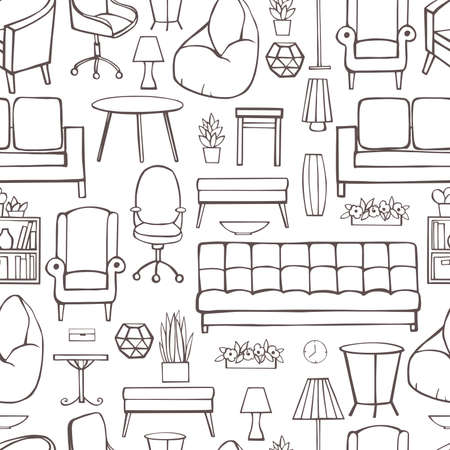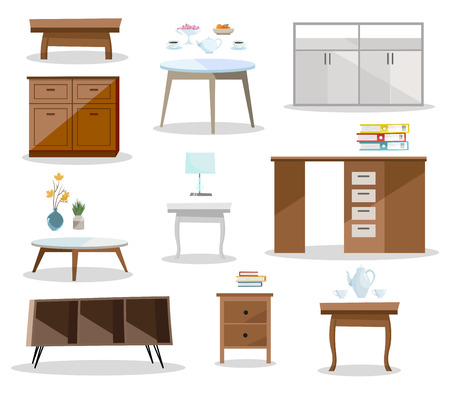Understanding Mid-Century Design in a British Context
Mid-century design, with its roots firmly planted in the post-war optimism of the 1940s to 1960s, has become a defining style for interiors worldwide. In the UK, however, this aesthetic takes on a unique flavour, shaped by British architectural heritage and social history. While the core principles of mid-century—simplicity, functionality, and clean lines—remain universal, British interpretations often blend these ideals with local nuances. For example, the compact nature of many UK homes calls for clever space-saving solutions, which align beautifully with mid-century’s focus on practicality. Moreover, the muted colour palettes and natural materials commonly found in British interiors harmonise with mid-century wood finishes and textiles. To truly honour this style in a contemporary UK setting, it is essential to explore not only the global origins of mid-century design but also how its timeless elements can be thoughtfully adapted. This involves respecting the character of British architecture—from Victorian terraces to modern flats—while embracing signature features like tapered legs, geometric forms, and organic shapes. By understanding both the international roots and local context, homeowners can select pieces that bridge past and present, creating spaces that feel both stylishly retro and unmistakably British.
2. Identifying Authentic Mid-Century Pieces
When selecting mid-century furniture for contemporary UK homes, distinguishing authentic pieces from high-street reproductions is a vital step. Original mid-century items not only carry history and craftsmanship but also tend to hold or increase their value over time, while modern copies often lack the same level of detail and durability. Understanding the hallmarks of genuine mid-century design helps buyers make informed decisions in a market where vintage and reproduction items often sit side by side.
Key Characteristics of Genuine Mid-Century Furniture
Authentic mid-century furniture is defined by its clean lines, functional form, and innovative use of materials such as teak, walnut, rosewood, and plywood. Construction quality is evident in features like dovetail joints, solid wood frames, and hand-finished surfaces. Many original British and Scandinavian pieces will have manufacturers’ stamps or labels, such as G-Plan, Ercol, or Hans Wegner—details that are rarely found on mass-produced reproductions.
Spotting Originals vs. Reproductions: A Quick Reference Table
| Feature | Original Mid-Century | High-Street Reproduction |
|---|---|---|
| Materials | Solid teak/walnut/rosewood; high-quality veneers | MDF or composite woods; plastic veneers |
| Joinery | Dovetail/crafted joints; visible screws minimal | Basic joins; visible metal fastenings common |
| Finish | Hand-finished; natural patina over time | Spray-coated; uniform finish with little depth |
| Labels/Marks | Maker’s stamp/label usually present underneath or inside drawers | No labels or generic stickers; no historical maker info |
| Weight & Feel | Heavy, substantial due to solid wood construction | Lighter; sometimes feels flimsy due to cheaper materials |
| Design Details | Tapered legs; organic curves; balanced proportions | Bolder shapes; less attention to proportion or subtlety |
Navigating the UK Market: Practical Tips for Buyers
In the UK, reputable vintage shops, auction houses, and specialist fairs are reliable sources for authentic mid-century finds. Always ask sellers about provenance and inspect items closely for construction details. Avoid relying solely on online listings with vague descriptions—whenever possible, view pieces in person to check for signs of age and craftsmanship. By learning to identify these key characteristics, you can confidently select authentic mid-century treasures that will enrich your modern home with both style and substance.

3. Blending Mid-Century with Contemporary UK Interiors
Successfully integrating mid-century pieces into a modern British home is both an art and a science. The key lies in striking a careful balance, allowing the timeless charm of mid-century design to complement – rather than clash with – current interior trends prevalent across the UK. To begin, consider the existing colour palette of your living space. Many contemporary British homes lean towards neutral tones: think soft greys, off-whites, and muted blues. Introducing mid-century furniture in warm woods or period-appropriate upholstery can add depth without overwhelming the space.
Layering Textures and Materials
Mid-century design is renowned for its use of rich textures such as teak, walnut, and leather. Pair these with the more tactile elements found in modern UK homes, like wool throws or velvet cushions. This juxtaposition creates visual interest and ensures that older pieces feel intentional rather than out-of-place.
Playing with Proportions
British homes, especially those in urban areas, are often compact. Opt for mid-century furniture with sleek profiles and tapered legs, which help open up tight spaces and maintain a sense of airiness. Avoid overcrowding by selecting one or two statement pieces—a sideboard, an accent chair, or a coffee table—rather than attempting to recreate a full vintage suite.
Mixing Eras Thoughtfully
The most inviting interiors blend old and new with confidence. Try pairing a 1960s G-Plan armchair beside a contemporary lamp from a local designer, or hang abstract artwork above a classic Danish sideboard. These combinations reflect the layered history and evolving tastes typical of UK households.
Ultimately, integrating mid-century elements into your contemporary UK home requires mindful curation. Let each piece tell its story while respecting the context of your existing décor. By weaving together different periods and styles thoughtfully, you’ll achieve a harmonious look that feels both fresh and deeply personal.
4. Sourcing Mid-Century Furniture in the UK
Finding authentic mid-century furniture for your contemporary UK home can be a rewarding journey, especially with the wealth of local resources available. Whether you’re seeking a statement Ercol sideboard or a G-Plan armchair, sourcing the right piece often comes down to knowing where to look and what to expect from each option.
Local Shops & Showrooms
Across the UK, independent vintage shops and specialist showrooms provide hands-on opportunities to inspect craftsmanship and provenance. Cities such as London, Manchester, and Glasgow feature well-curated stores that regularly stock Danish teak tables and British classics. Visiting these retailers allows you to assess condition, ask questions about restoration work, and sometimes negotiate on price.
Vintage Fairs & Markets
Regular vintage fairs—such as those hosted at Alexandra Palace or Birmingham’s Custard Factory—are hotspots for discovering unique mid-century pieces. These events often gather multiple vendors under one roof, making it easier to compare styles and prices. Arriving early is key, as the best finds are often snapped up by seasoned collectors.
Online Marketplaces
The rise of online platforms has made it simpler than ever to browse an extensive selection of mid-century furniture from the comfort of your own home. Here’s a quick overview:
| Platform | Strengths | Considerations |
|---|---|---|
| eBay UK | Wide selection; bidding opportunities; local pickup options | Check seller ratings; clarify delivery terms |
| Vinterior | Curation of verified sellers; focus on quality; UK-wide delivery | Higher prices for premium pieces |
| Etsy UK | Hand-picked items; small independent sellers; custom refinishing available | Varied shipping times; read descriptions carefully |
| Facebook Marketplace & Gumtree | Bargain potential; ability to view before buying; local deals | No buyer protection; items sold as-seen |
Spotlight on British Designers
The UK has its share of celebrated mid-century designers, including Robin Day, Ernest Race, and Lucian Ercolani. If you’re after something distinctly British, research their signature works—be it the stackable Polypropylene Chair or classic Windsor designs—and seek out pieces attributed to them for an authentic touch.
Advice for UK Buyers
- Measure Up: Always check dimensions against your space and doorways.
- Ask for Provenance: Reputable dealers should provide details about age and origin.
- Factor in Delivery: For larger items, consider courier services that specialise in antique furniture.
- Sustainability: Buying second-hand supports eco-friendly interiors—a value embraced by many UK homeowners.
- Bargain Respectfully: Many sellers are open to negotiation but appreciate fair offers based on condition and rarity.
Sourcing mid-century furniture in the UK blends cultural heritage with modern needs. By exploring local venues, engaging with trusted online platforms, and focusing on quality British design, you can confidently build a collection that complements both contemporary lifestyles and nostalgic charm.
5. Practical Considerations for UK Homes
When selecting mid-century pieces for contemporary UK homes, it is crucial to factor in the unique characteristics of British residential architecture. Most UK homes, especially those built post-war or during the Victorian and Edwardian eras, tend to feature modest room sizes, narrow hallways, and compact living spaces compared to their international counterparts. This means that scale and proportion become key considerations when integrating mid-century furniture.
Room Proportions and Scale
Mid-century designs are often celebrated for their clean lines and elegant simplicity, which can work well within smaller UK rooms. However, avoid oversize or overly bulky items—such as an expansive American-style sofa—which can easily overwhelm a typical British lounge. Opt instead for pieces with slim profiles and tapered legs, which provide a sense of openness and allow light to flow more freely through the space.
Adapting to Residential Layouts
UK homes frequently feature specific layouts such as terraced housing or semi-detached properties, where living and dining areas may be interconnected but still constrained by walls or doorways. To make the most of these layouts, consider versatile mid-century pieces like modular shelving units or sideboards that can function as both storage and subtle room dividers without blocking sightlines or foot traffic.
Tips for Placement
– Position iconic armchairs or low-profile sofas near windows to maximise natural light and maintain a spacious feel.
– Use nesting tables and compact coffee tables that can be tucked away when not in use.
– Choose wall-mounted lighting or floor lamps with slender stands to save surface space on smaller side tables.
– In bedrooms or entryways, opt for streamlined chests of drawers or benches that fit neatly against walls without encroaching on walkways.
By thoughtfully considering the dimensions and layout of your home, you can select mid-century pieces that not only honour the style’s heritage but also enhance everyday living in a modern UK context.
6. Caring for and Maintaining Mid-Century Finds
Once you’ve carefully selected your mid-century pieces, preserving them in the UK’s unique climate becomes essential to safeguard both their beauty and value. The often damp and unpredictable weather can pose challenges, particularly for wooden furniture and delicate finishes. To keep your vintage treasures looking their best, it’s wise to position them away from direct sunlight and sources of heat—this prevents warping, fading, and cracking over time.
Cleaning Tips for British Homes
For regular cleaning, use a soft, lint-free cloth to gently remove dust. Avoid harsh chemical cleaners; instead, opt for mild soap diluted in warm water for stubborn spots. When dealing with wood, consider applying a high-quality beeswax polish every few months—this helps protect against moisture while enhancing the grain’s natural lustre. Upholstered items benefit from frequent vacuuming using an upholstery attachment, and if spills occur, blot (don’t rub) with a clean cloth to prevent stains from setting.
Dealing with Humidity and Mould
Given the UK’s propensity for humidity, especially in older homes, ensure rooms are well-ventilated. If you notice any signs of mould or musty odours, act promptly: wipe affected areas with a mixture of white vinegar and water, then dry thoroughly. Dehumidifiers can be invaluable during wetter months to maintain ideal indoor conditions for your cherished pieces.
Accessing Local Restoration Resources
If your mid-century find requires more than basic care—perhaps it needs reupholstering or structural repairs—seek out local specialists who understand period furniture. Many UK towns boast skilled restorers; check recommendations through The Furniture History Society or The British Antique Furniture Restorers’ Association (BAFRA). For smaller DIY fixes, reputable shops like Axminster Tools or John Lewis offer quality restoration kits tailored to vintage materials. Investing in professional help where necessary ensures your mid-century gems remain an enduring feature in your contemporary home.


